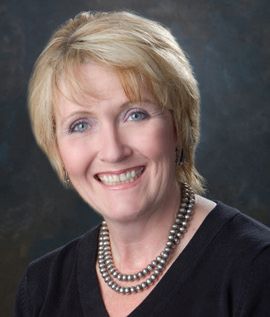Holly Benson presents a ‘cheat sheet’ to prepare for tomorrow’s workforce, which will be faster, smarter and bigger than ever before
Wearable technology. Co-creation spaces. Cultural dexterity. Virtual offices. We hear a lot about what the future of work will look like, but where is the cheat sheet for how we prepare? Consider these four major shifts in the modern workplace:
 (click picture to enlarge)
(click picture to enlarge)
The good news? Whether these changes create a defining weakness or a competitive advantage for your business is up to you. Far from being random or unpredictable, you can actually engineer the outcome.
BIGGER
If your workforce isn’t yet globalised, your customer base may well be; if your customer base still isn’t, your supplier base likely is. There is a growing certainty that your managers will need to manage across geographic, linguistic and cultural boundaries; your employees will need to collaborate with people who developed in a very different cultural Petri dish. How do you prepare?
The first response is tactical: Design and implement HR processes and systems that allow you to manage human capital on a global scale. Leverage technology to ensure that leaders have control not just of a global operation but also of a global talent pool.
Second, consider your strategy. Are you an Australian company that operates internationally, or a global company? If the latter, you need to be driving global diversity through your staffing and succession planning, your leadership should reflect the demographics of the markets in which you operate, and your decision-making should be more decentralised.
You must also foster cultural agility: the human ability to operate seamlessly across borders. I’m not talking about cultural immersion courses but the awareness that others are truly different. International business partners may have different definitions of success: you might be focused on operational efficiency while your partner is focused on expanding the local payroll. Or you may use language differently.
FARTHER
Increasingly, employees need to work effectively with people they cannot see, and may never meet. As one project fi nishes, they must quickly be able
to establish new relationships with different team members – across the hall or across the globe, from home and remote sites, with short-term contractors and long-term partner organisations. The key to navigating these relationships is clarity.
Once upon a time, proximity could compensate for lack of clarity; if someone didn’t understand, or didn’t deliver what you wanted on the first attempt, you simply walked down the hall and tried again. That’s not possible in a virtualised workplace.
To bridge the virtual gap, it’s important to start new individual or organisational relationships with explicitly defined goals, expectations, metrics and rewards. You also need the right performance management systems, governance – and yes, old fashioned listening – to reinforce them.
FASTER
The pace of business and of change itself has never been quicker for organisations, or for individuals. I worry when I hear change-weary employees lamenting, “When will this be over?” Leaders need to be honest with them: it won’t be “over”.
HR must help set these expectations and prepare staff to cope with them. Both recruitment and succession planning should be assessing candidates’ agility and resiliency. They should look for evidence of rapid learning, curiosity, and openness. From onboarding through ongoing communication and development programs, the organisation should set the expectation of change and pace, and effective strategies for coping with them. OE/OD leaders should also make the case for investing in meaningful organisational change support for major initiatives.
SMARTER
In addition to the technical aspects of business information sharing – business intelligence, analytics, big data and the like – we must consider the human factors.
The organisation that waits for all information to pass through a central decision-making authority has already lost the race. Winning enterprises not only invest in systems that enable real-time data synthesis and availability but they also invest in creating the organisation capable of leveraging it.
In these winning organisations, decision making becomes decentralised and democratised. Senior executives are open to the possibility that a front-line employee halfway across the world might possess a more important insight than peers in the C-suite. Front-line employees have the tools and organisational support that empower them to act on information locally, or rapidly get it to someone who can.
Innovation – or lack thereof – is at heart a cultural issue. Organisations must remove the barriers by rewarding collaboration and prudent risk-taking. Encourage people to fail fast, often and cheaply by budgeting for multiple smart attempts. Only then will you grow the team you need to succeed in a bigger, farther, faster, smarter world.
 (click picture to enlarge)
(click picture to enlarge)
 Holly Benson heads the organisational transformation practice at Infosys, a global business consulting and technology services company. Contact her at [email protected]
Holly Benson heads the organisational transformation practice at Infosys, a global business consulting and technology services company. Contact her at [email protected]



 Holly Benson heads the organisational transformation practice at Infosys, a global business consulting and technology services company. Contact her at [email protected]
Holly Benson heads the organisational transformation practice at Infosys, a global business consulting and technology services company. Contact her at [email protected]